
Tusia Dabrowska, Wiktor Freifeld (music),
Still from Magnetoreception 2021. Video. 2:02
The Performance of Mediation
An interview with Tusia Dabrowska by Rachel Stevens
Tusia Dabrowska is an artist who works at the intersection of storytelling, performance and media. She champions collectivity, embraces hybridity, mediation and liveness, and highlights the experiences of communities-in-flux. In her hands (and through her performance), shiny pop aesthetics, cultural histories and technologies high and low crash together in intriguing ways, and failures become transformed into poetry. Tusia is a founder of Temp. Files, but here we get to talk about her own creative practice, in which her impulse seems to be to circle back to the collective.
A PDF of the interview is available here.
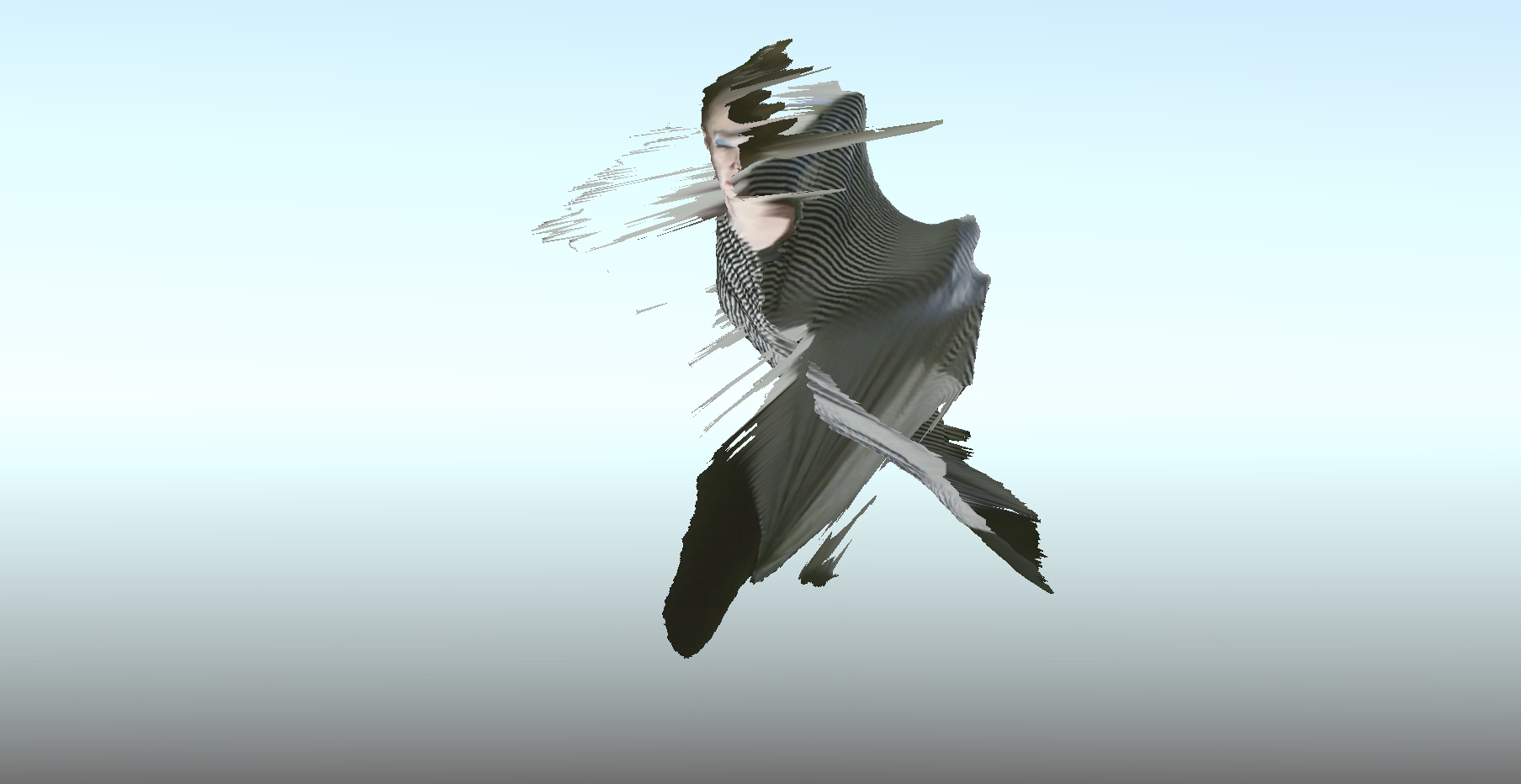 Tusia Dabrowska. Depth sensor tests for Magnetoreception, 2021
Tusia Dabrowska. Depth sensor tests for Magnetoreception, 2021
RS: First of all, as an initiator of this online co-op, Temp. Files, what was your personal motivation for building such a platform? I have felt so stimulated and supported by the structure and interactions – how has it played out for you and your process of making work?
TD: I wanted to hold space for artists who take mediated performance seriously. I feel like there is a lot of amazing work out there that interrogates mediated liveness, but the makers are scattered between poetry, art, film, and digital/virtual worlds, and they often feel lonely in those worlds, like they don’t quite fit-in. So, I felt it was important for us to come together as we all share this aspect.
Something I particularly appreciate about our process is that it allows us to challenge ourselves in the way we work with technology but from a place that starts by asking about liveness and transmission, and not about technological potential or the lack thereof. So, for example, Kara was working with disembodied performance, so she combined Photoshop with video. I am interested in hybrid forms, so I played with depth sensors. I know that Sunita is interrogating the First Person Perspective and she worked with a new camera.
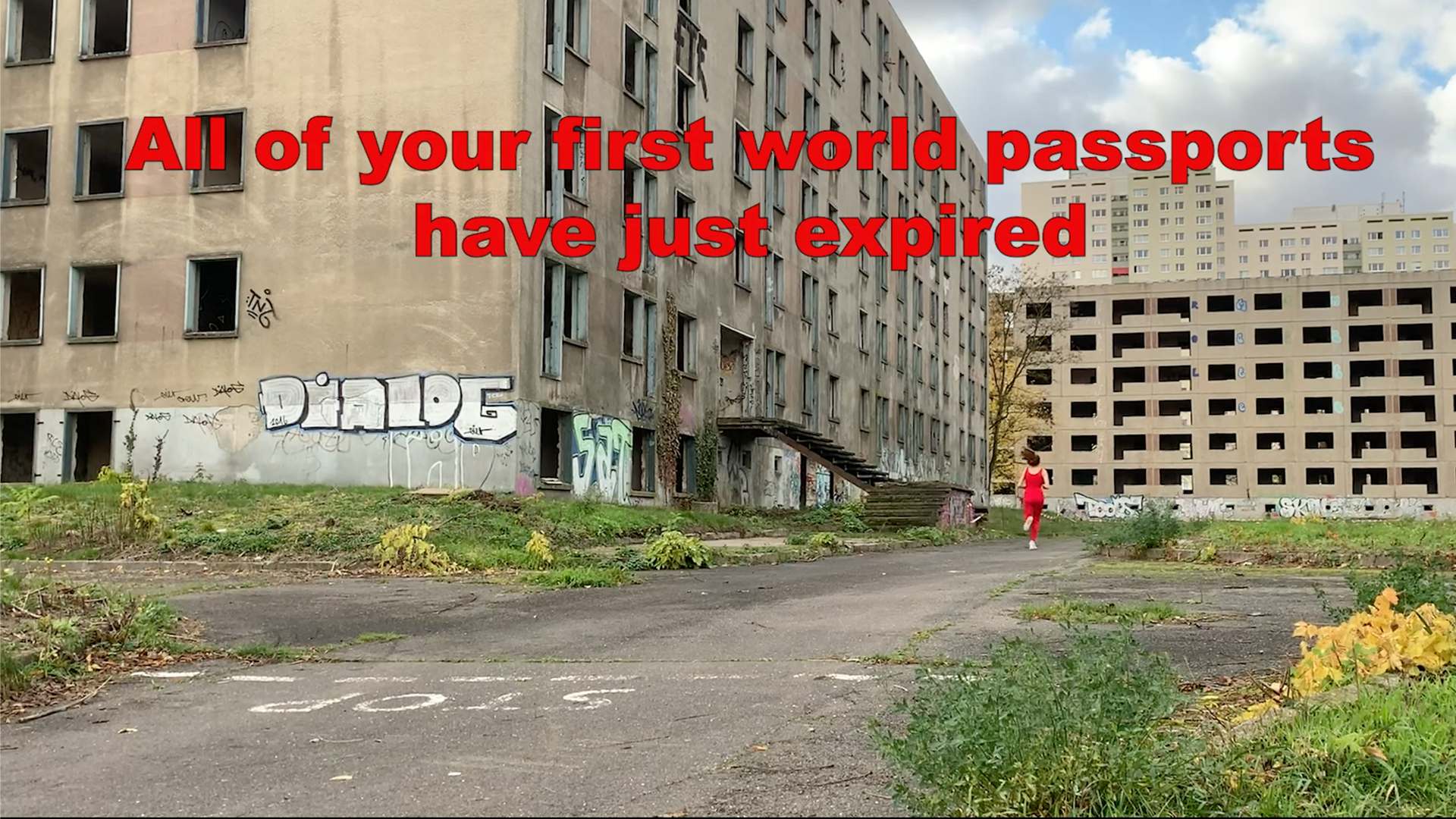 Tusia Dabrowska, Wiktor Podgorski (music)
Tusia Dabrowska, Wiktor Podgorski (music) First World Passports, 2021, still from video; premiered on
araratcollective.net and available here.
RS: I think of you as someone shaped by hybrid and trans-national/trans-cultural identities—Polish, Jewish (not common in Poland) and American; Communist, Post-Communist. Also, a writer who has migrated to performance and visual art. How do these multiple identities play out in your work?
TD: I suppose when you are a mix, mixing things seems intuitive. So, clearly that kind of approach has affected my work. I’m also thinking about Emily Brandt’s video/poem and her focus on infusion. She uses the term “infusion” on a continuum with immersion. The constant fluidity and becoming. Learning and making.
The tension between making and learning is what often creates liveness in performance. Of course, this idea of having the courage to discover something about yourself in front of others feels very “American.” In terms of both the culture of self-promotion and of the idea of earning your success.
Anyway, I’m also thinking here about the parallels between assembling a self and assemblage as an art form. Especially since the beginning of the pandemic, I have found myself returning quite a lot to the assemblage works of two Polish Jewish women artists: Erna Rosenstein and Krystiana Robb-Narbutt. Their assemblages are rather small, probably 12” by 16” and utilize found day-to-day objects. Rosenstein’s pieces often incorporate mechanical elements (like a deconstructed door bell) while Robb-Narbutt’s blend personal and political narratives. I’m interested in the way their works are displayed in public as collections that create an intimate timeline, a filter for the viewer, while also representing multiplicity. The parallels to the digital space are obvious.
And, finally, I think hybrids often occupy the margins. So, it’s also about acknowledging the realities of coming from a working class immigrant community and thinking about alliances I have made and exclusions I have faced, as well as a certain familiar feeling of always catching up, of needing to learn someone else’s code, and understanding how these realities have affected my place within art networks.
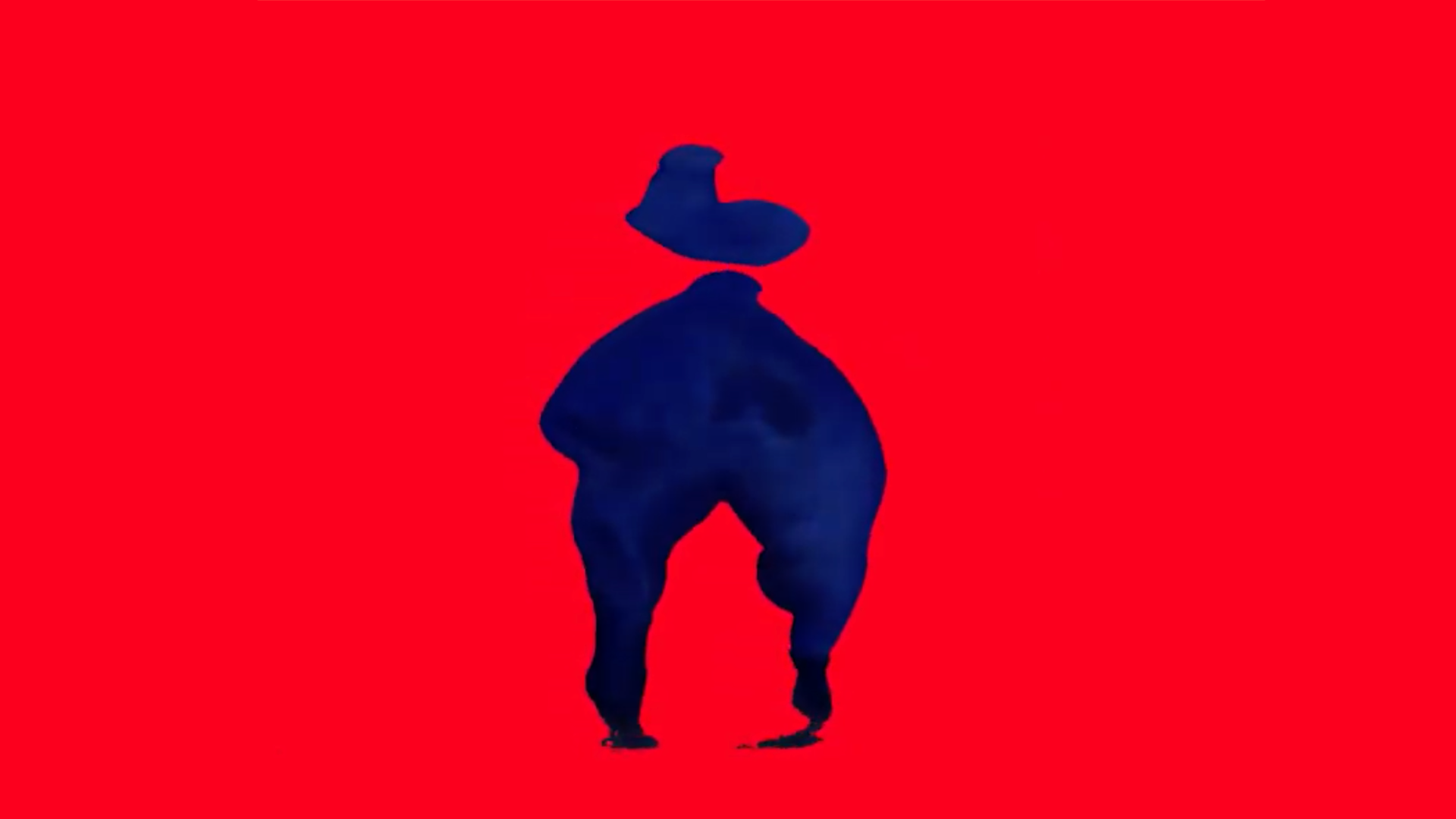 Tusia Dabrowska with Wanda Gala, Next, 2021,
Tusia Dabrowska with Wanda Gala, Next, 2021, machine learning model / still from a training loop; araratcollective.net
RS: How has spending a significant amount of time in Berlin lately informed your work? (In addition to any other ways, it feels like both Jewish and Post-Communist identities could be activated by this context).
TD: I don’t feel like I have a perspective yet on the city, but it’s definitively new and surprising to be in a part of the world where the gaze is turned also toward Eastern or Central Europe, where the relationship between the West and its Others is examined from this perspective.
RS: I also feel like the US is a place of reinventing yourself, there is a constant compulsive need to reinvent yourself in some way. It is the exhausting side of the American Dream.
TD: Yeah, and here, in Berlin, I seem to encounter a lot of work that deals with archives and history, so the process seems to be not about imagining a new self, but understanding your old self better. But, again, these are just casual observations, and we will see how the experience of living in Berlin will affect my work.
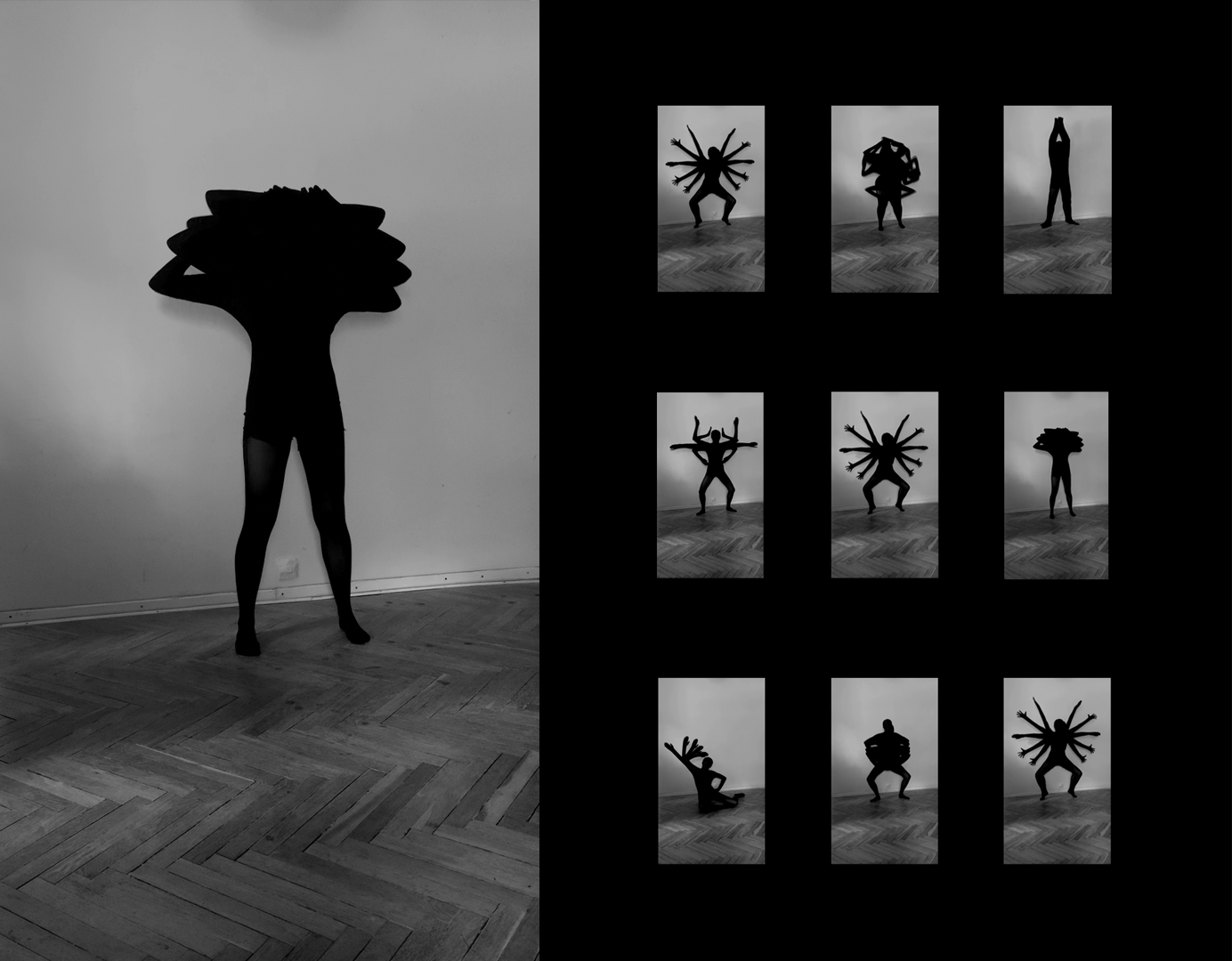 Tusia Dabrowska, On the edge of voluntary, 2021,
Tusia Dabrowska, On the edge of voluntary, 2021, scroll-triggered animation for desktoparchives.info (Berlin)
RS: I have noticed that you collaborate with others often and also participate in various co-ops and groups. It is something that I quite admire. Is collaboration something that you do intentionally? Or does it tend to happen organically for you?
TD: When I was in grad school at NYU, Steve Kurtz of the Critical Arts Ensemble was a visiting professor, and I took a class with him on working in collectives. I can honestly say that it changed my life. A classmate and I started a collective then, actually, it was a duet with additional collaborators, and we’re still best friends, and she—Clara Ines Schuhmacher, is still very much in the universe of my collaborators. It made me realize I make work in dialogue. And actually, that it’s OK to make work in dialogue.
In video, and forms that either come out of a recorded story or of the body, collaborating is pretty intuitive. Even in non-fiction contexts, performative projects mediated by recording media are closer to theater—there is this sense of togetherness. But the Paper Tiger collective/collaborative traditions have been replaced by solo YouTube production and individual channeling. I’m not so sure this is a good thing. Obviously, there is something liberating in working alone, with this recent accessibility of tools, and even in the financial promise of sharing your media on a network like YouTube or TikTok, but these new tools also turn a community into a network of competitors. So, I’m committed to creating spaces that counter these processes and protect togetherness/collaboration.
RS: Agree. I think that making work in dialog is often greater than the sum of its parts. It can be generative.
TD: Coming back to Temp. Files, I suggested that we should be a co-op. This is probably because Michelle Levy and I have a shared interest in Polish Jewish history, so when I first approached her about starting a video co-op, I mentioned that I am inspired by Jewish farmers’ co-op models from the interim years in Poland.
I’m committed to exploring forms of mutual aid, of sharing and exchange. Cooperative models are fragile because working with other people is difficult and fluid, and I am not intuitively good at people stuff, but I think we need new models, and we—marginalized makers and artists whose work does not have a traditional commercial dimension—need to hold space for one another.
RS: I enjoy how your aesthetic sometimes includes glitchy or broken visualization technologies, how you embrace the ways they are not supposed to be used, or push them beyond their limits. On the other hand, I also quite enjoy your low-tech props and backdrop setups.
TD: Thank you! I love the brokenness of things. Also, I tend to work with my non-talents, so I approach it all with some exuberance. But in all seriousness, I think a lot about inclusion, sharing, and failure. I probably have used in the past the idea of failure as an excuse—“my work is not terrible, it fails...intentionally” (laughs). But potential for failure interests me as an inherent component of performance. To perform is to estimate potential failures and to train in hopes to skip them, but how we react to failures when they happen is often the most raw, most interesting part of performance. It’s that place where liveness happens.
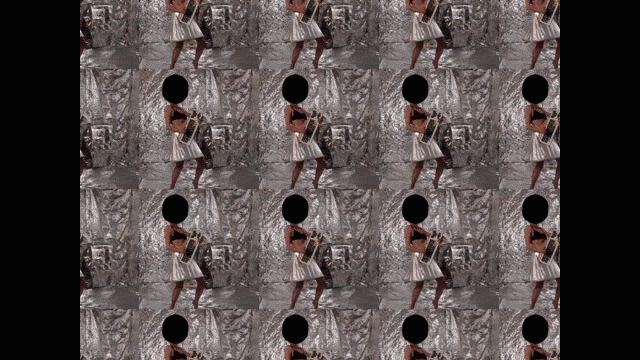
GIF (filmed in 2018 at the Signal Culture Residency)
And really, I’m interested in mediated performance, which is something that has shaped my life. When I was a kid, once a month we’d go to a local Dom Kultury (cultural center) that had a landline, and my dad would call from the US on a set day/time and we’d talk. And at the end, we would set another day/time—in a month, to chat. We loved each other very much or these mediated ideas of each other, because that’s how we knew each other. And we put enormous work into the performance of being a dad and a daughter. So, you know, in some ways, I’ve been thinking about mediated performance since the age of 4.
I moved to the US during the early days of dial-up Internet access. So, on one hand, it felt like my experience of immigration was so much more privileged than the previous generations. You know, when my stepmom and dad were emigrating, they knew it would be years before they would see their close ones. In this sense, it was so much easier for me because I was able to stay connected on a daily basis to the people I loved. On the other hand, the way technology mediates presence–the glitchiness of it all, the “poor” or “unstable” connection and what it hides and reveals—all the things that others have discovered because of the pandemic—is a metaphor for a modern e/immigrant experience. The realness and unrealness, the proximity and the distance, the truth and fantasy of mediated encounters—my lived experience influenced my interest in and approach to technology and to working with (or on the edges of) the potential of technology to mediate our presence.
RS: Influences: writers, visual artists, performers, musicians?
TD: I saw that in the interview that Kara made with you, you mentioned Pipilotti Rist. When I first saw her work, it was definitely, like, OK, I gotta go learn some video editing. Right now. Before seeing her work, I understood video as a very expensive, exclusive form. But more than that, her videos opened me to the idea of performance for video.
And, of course, Home of the Brave. It was like an awakening. Both Laurie Anderson and Yoko Ono, moving between forms/modalities, the confidence and the completeness of thought in their work really gave me a sense of direction. Just this idea that a woman could…that you can assemble work that lives between genres and that is rooted in text.
Also, Jibz Cameron aka Dynasty Handbag. I took a class with her in grad school on performing a persona. This was not long after she released her record and that year I got to see her perform a bunch, which was amazing. She told me to get a camera and start working with video, so that was a really important moment for me. And, of course, the clarity of her persona is truly inspiring.
RS: Want to talk about the piece you are developing for Temp. Files?
TD: For many reasons, including the way self-reflection has been reduced to a social media post, we live in a world where we are told that a crisis or trauma is not just something we can heal from but something we’re supposed to learn from. Like we are protagonists in a story (1). So, I’ve been thinking about that and how reductive that is–the times it is used to claim we can pull ourselves up by our bootstraps, and the times we are told our path is predetermined by some cosmic forces. Also, I come from a people who have experienced a lot of pain, and the idea of learning from pain is so problematic to me because it implies we had somehow deserved it or that collective suffering has some higher purpose. So, I’ve been thinking about all the things that people (including myself) say they’ve learned from the current time of crisis and how long these lessons will actually last before we go back to our old ways. To be honest, the last year and a half has been transformational for me and it shows in the work I make. But if everything happens for a reason, this video (2) is about all the lessons from the pandemic that I have not learned.
----
(1)
Berlant, Lauren. Cruel Optimism, Duke University Press, 2011.
(2) Thank you, Jonathan Taylor, for your choreographic guidance on this project and introducing me to thigmotropism.
June 2021
